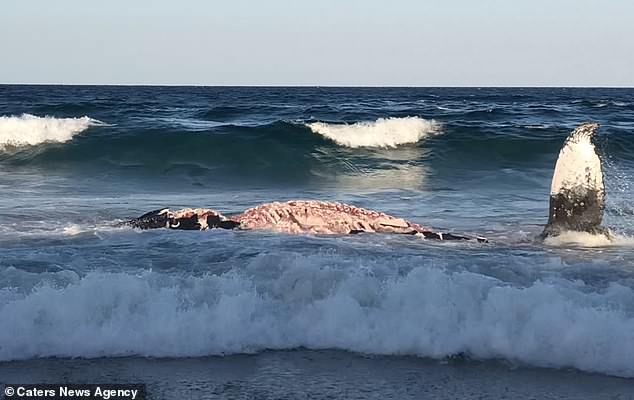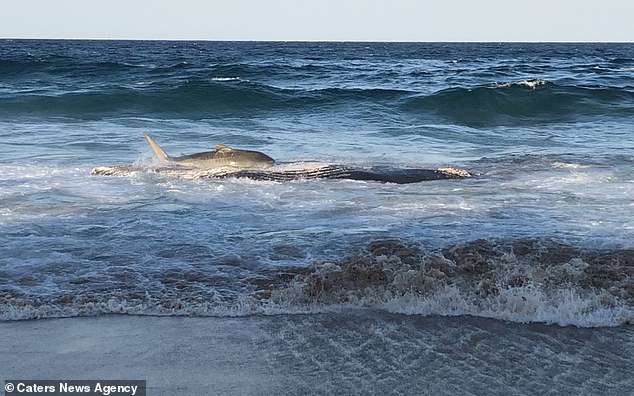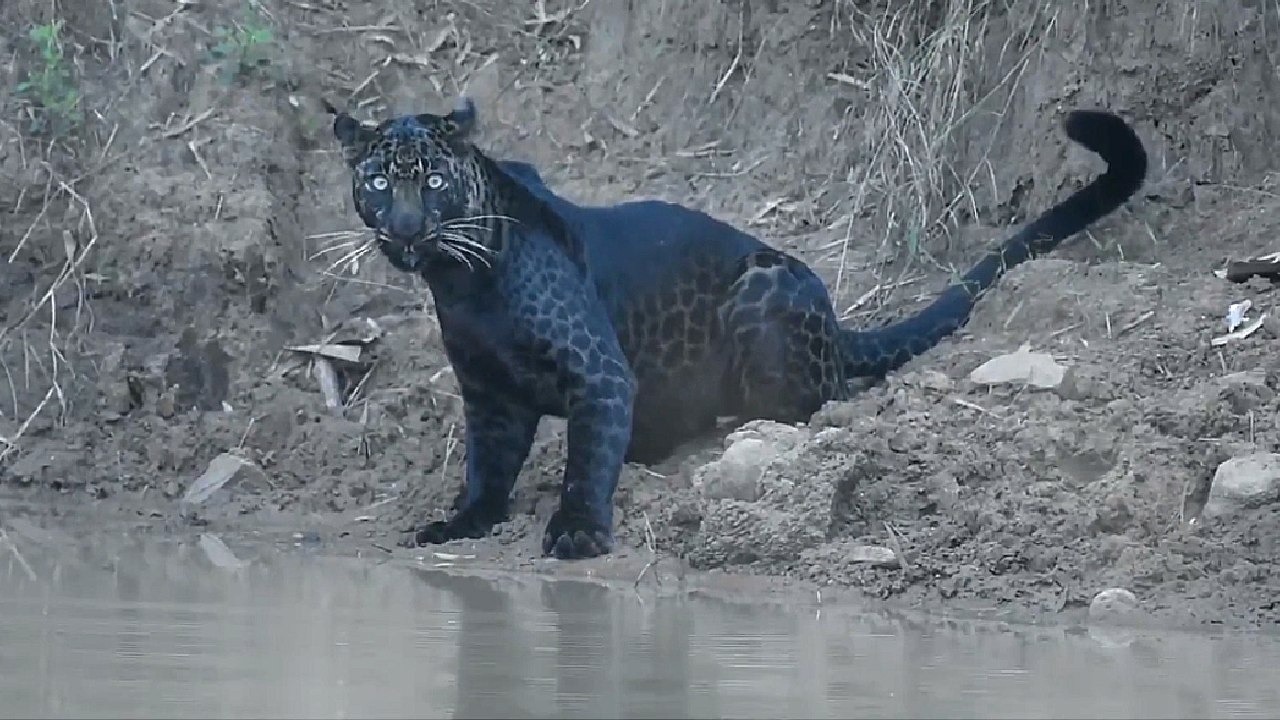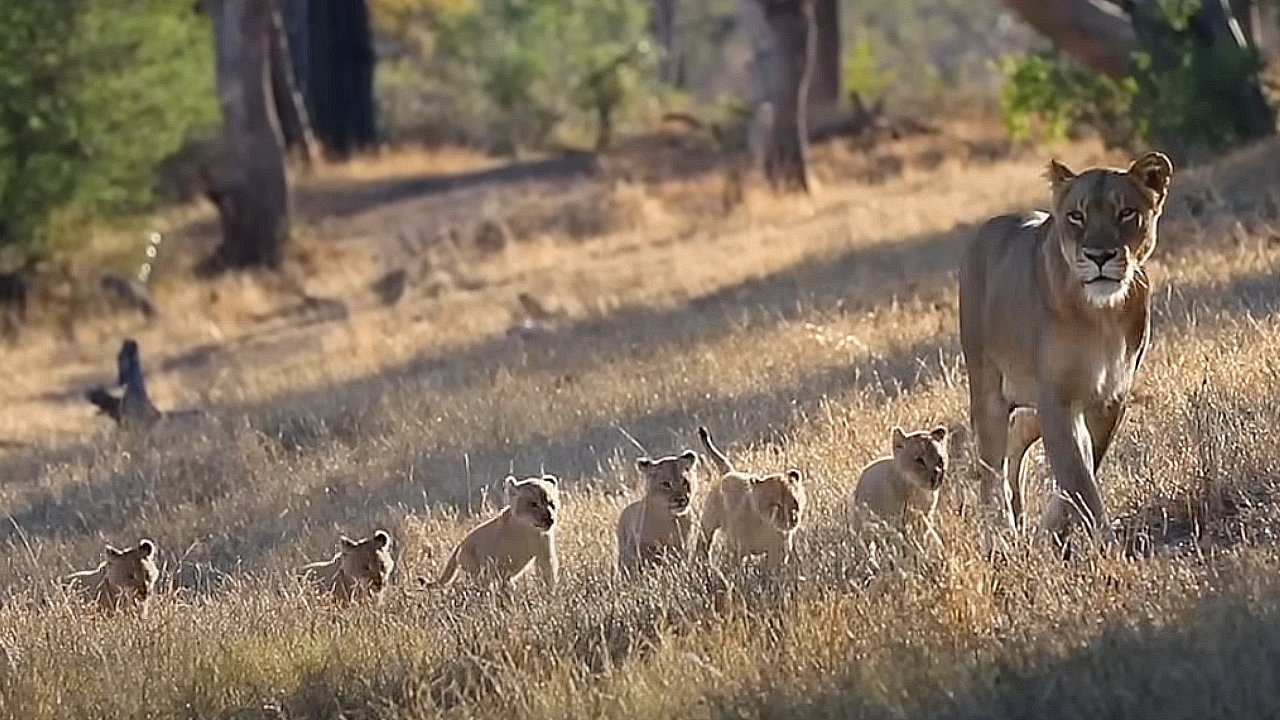This is the extraordinary moment a tiger shark risks its own life by beaching itself to eat the carcass of a huge humpback whale.
The 13-foot shark was spotted on the coast of Mozambique frantically swimming back towards the open ocean after finishing its meal.
The 66,000lb humpback whale carcass washed up on Ponta beach, Mozambique, Africa, on the morning of September 11.
As well as attracting a crowd of beachgoers the enormous carcass also encouraged an estimated 30 tiger sharks, 20 bull sharks and up to 10 dusky sharks to take a bite.

The half eaten whale carcass washes up on the shore line in footage captured by a beachgoer Ponta beach, Mozambique, Africa on the morning of September 11 this year
What is a tiger shark?
The tiger shark is one of the largest shark species and has been known to reach lengths of around 18 feet.
They are apex predators and hunt a huge variety of animals, including turtles, sea snakes and ocean mammals such as dolphins or whales.
It is a nomadic animal which is often found close to the coast, guided by warmer currents in deep waters.
They have been found across the western Pacific Ocean, from Japan to New Zealand, as well as the Caribbean Sea, the Gulf of Mexico and South America.
It is one of the few sharks to have been involved in attacks on humans, as only around a dozen of the more than 300 species of shark are known to have done so, according to the U.S. ocean service.
Beachgoer Lorrayne Gaymer, 38, captured the moment the carcass washed up on the Mozambique beach.
At the start of the clip the shark is seen flailing as it lies on top of the humpback whale’s remains before it is hit by an incoming wave.
As the wave turns them over, the full size of the carcass can be seen with little of the flesh remaining after the shark and other creatures had tucked in.
The shark can be seen struggling to escape back into the ocean as the whale’s body blocks its path but eventually it puts some distance between itself and the shore.
After the shark had gone a large crowd of locals gathered to inspect the whale’s remains in the hope of extracting meat and blubber.
Ms Gaymer said: ‘As the tide changed the whale carcass drifted towards the beach and this is when the sharks risked their lives to get a final feast from it.
‘Initially, a rescue attempt was made for the whale, but after the locals of Ponta contacted a whale expert it became clear that the whale was very sick and shouldn’t be moved.
‘It had passed away, and as the tide went out, hundreds of locals of Ponta all came down to take their share.’
It is not clear why the shark beached itself but they have been known to do so in the past to escape attacks from other sea creatures.
In 2011 a shark swam to shallower waters in New Zealand to get away from whales which sometimes target smaller sharks.
And in 2015 a great white shark got stranded on a Cape Cod beach in the United States before beachgoers helped it to escape by throwing buckets of water over it.

A tiger shark swims frantically against the waves after beaching itself in order to gain a meal out of the half eaten whale carcass washes up on the shore line in Mozambique

Hundreds of locals surround the dead whale carcass after the shark had dramatically beached itself to eat the enormous meal on the coast of Mozambique last month









